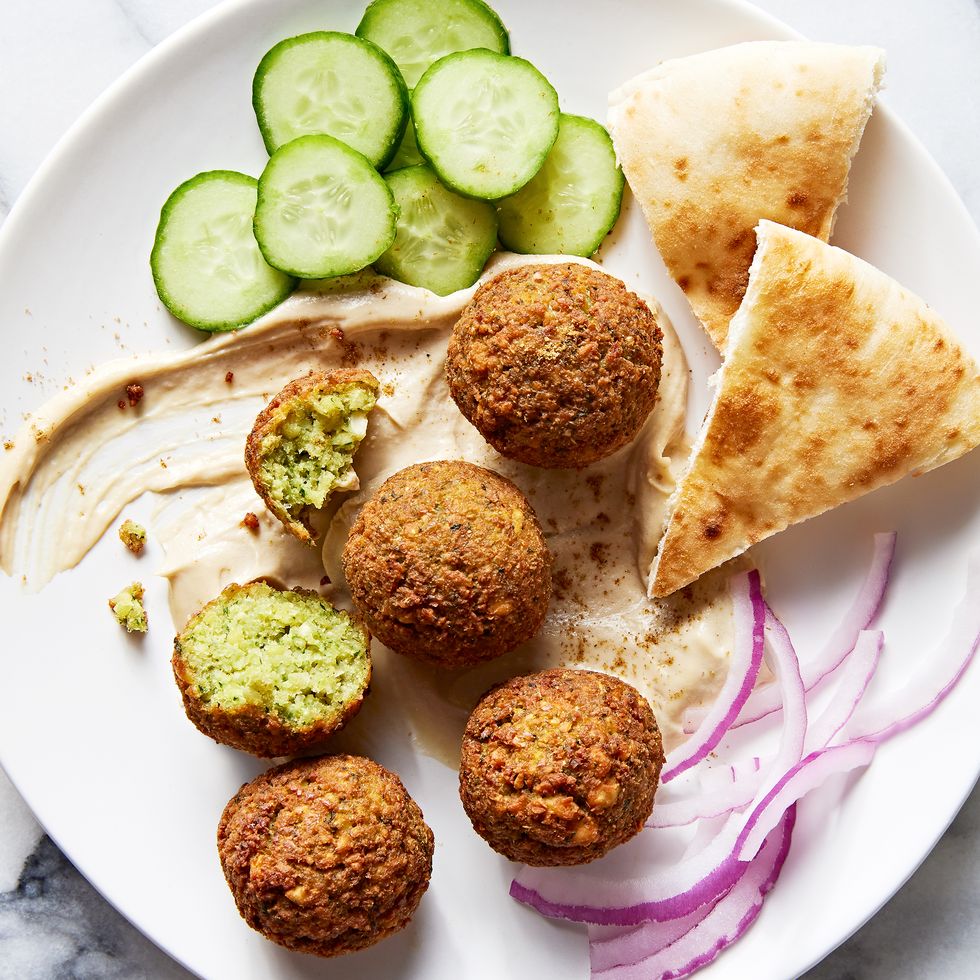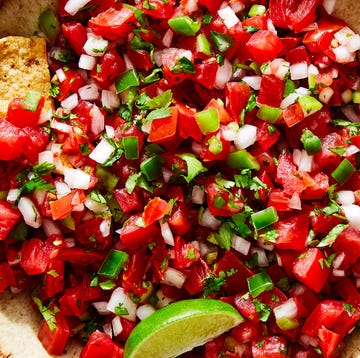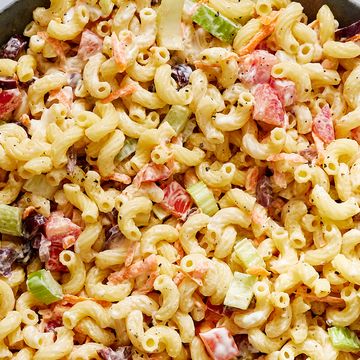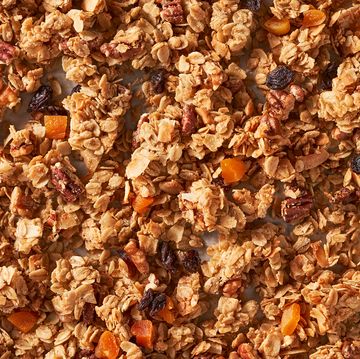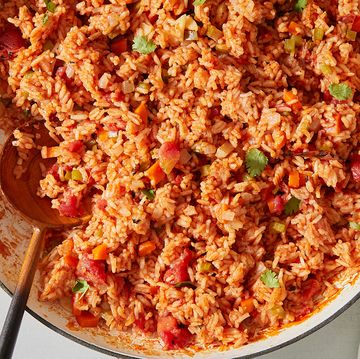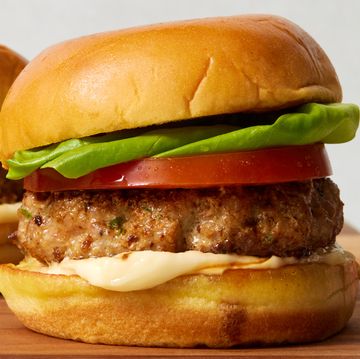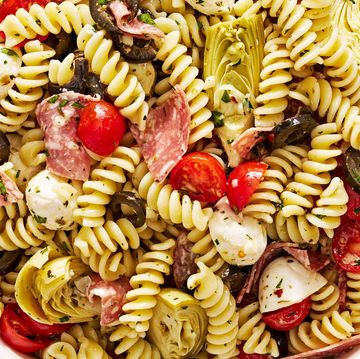Falafel may be the king of Middle Eastern street food, but that doesn’t mean you have to travel to enjoy it at its best. Boasting a crisp, golden brown exterior and a center that’s soft, tender, and packed with chickpeas and fresh herbs, my homemade falafel recipe hits all those classic Middle Eastern flavors and familiar street food vibes. Never made it at home before? Read on below for all my top tips to get it just right.
What People Are Saying:
"These were great! Awesome to not have to cook the chickpeas either, which is always a chore." - dontkalemyvibe
"Tastes great...amazing to have fresh at home. Perfect to dip in hummus." - BakingInBKLYN
What Is Falafel?
At its essence, falafel is a round fritter typically made from ground chickpeas and flavored with herbs (parsley and cilantro) and spices (cumin and coriander). While many countries—including Egypt, Israel, and Palestine—lay claim to it, most seem to agree that wherever you’re eating it, it should be accompanied by all the fixings, including fresh pita, salad, and tahini sauce.
How To Make Falafel
INGREDIENTS
- Dried Chickpeas: Dried chickpeas can take an eon to cook, but not when used in falafel. All they need is an overnight soak before they’re ready to be blitzed along with the rest of the falafel ingredients—no simmering necessary! What’s more, dried chickpeas produce falafel with a crisper exterior and better chickpea flavor. It’s win-win!
- Onion & Garlic: These two alliums bring deep, savory flavor, while also contributing moisture that helps bind the falafel together. I prefer white onion for falafel, as it's punchier and less sweet than its yellow counterpart.
- Cilantro & Parsley: Fresh herbs bring a bright, aromatic element that balances the earthy, nutty chickpeas. Parsley delivers crisp, clean flavor, while cilantro offers citrusy notes.
- Baking Powder: You probably didn’t expect to find a leavener in the ingredient list, but it’s essential for achieving a light, tender, fluffy texture.
- Spices: Falafel without cumin and coriander hardly taste like falafel. The cumin contributes warm, savory overtones, while the coriander offers a complex mix of earth and citrus.
- Flour: I use just enough all-purpose flour to absorb excess moisture and bind the falafel mixture without weighing it down. The flour has the added bonus of helping the falafel develop a crisp, golden exterior during frying.
STEP-BY-STEP INSTRUCTIONS
The chickpeas require an overnight soak, so plan accordingly. It’s good policy to first pick over the chickpeas in case they harbor any pebbles or other foreign matter. Next, give the chickpeas a rinse and transfer them to a large bowl. Pour over cold water to cover by at least 2"; cover and refrigerate overnight. Check out the chickpeas after and before a good, long soak:
Drain the hydrated chickpeas and pat them dry to get rid of excess moisture. Transfer to a food processor and pulse just until the chickpeas are partially broken down. Add the rest of the falafel ingredients and pulse until the mixture is finely chopped but not pasty. (Don’t overdo it; you want to leave some texture.) Sprinkle the flour over and pulse just to combine.
Now it’s time to form the mixture into balls. I find that a 1-oz. cookie scoop is perfect for ensuring the balls are consistent in size, but you can also use 2 Tbsp. Scoop the chickpea mixture and roll between your palms to form smooth, compact 1" balls. Arrange on a parchment-lined baking sheet.
It’s time to fry! Three tools should make this a breeze: a heavy pot (I recommend a Dutch oven), a deep-fry or candy thermometer, and a spider or slotted spoon (the falafel are too delicate for tongs). Clip your thermometer to your pot and pour in enough vegetable oil to come 2" up the sides. Heat over medium-high until the thermometer registers 350°. Meanwhile, set a wire rack inside a large baking sheet and place near the stove. Working in batches of 6 or 7 and adjusting the heat as needed to maintain temperature, fry the falafel until golden brown and crisp, 2 to 3 minutes. Using your spider/slotted spoon, transfer the falafel to the wire rack to drain.
Serve the falafel warm with tahini sauce and plenty of pita alongside.
Full list of ingredients and directions can be found in the recipe below.
Recipe Tips
- Can I substitute canned chickpeas for dried? While you can create excellent baked or pan-fried falafel using canned chickpeas, if you want to make the deep-fried variety, you’ll need to start with dried chickpeas. Dried chickpeas—even after their overnight soak—are significantly drier and starchier than the canned variety, yielding a falafel batter that holds together better when deep-fried.
- Keep an eye on the temperature: Frying at home might seem intimidating at first, but I promise it’s not difficult so long as you have the right tools: a large heavy pot (preferably a Dutch oven) and a deep-fry or candy thermometer. Just keep a close eye on the oil temperature, adjusting the heat as needed to maintain 350°.
Storage
Falafel are best served fresh, but they'll keep in an airtight container in the fridge for up to 3 days. I recommend reheating them in the microwave; an oven or air fryer will only dry them out.
If you want to work ahead, falafel freezes remarkably well. Spread out the uncooked balls on a parchment-lined baking sheet freeze until solid, then transfer them to an airtight container or resealable plastic bag and freeze for up to 1 month. Fry straight from the freezer.







